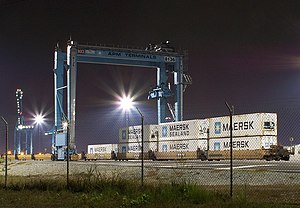Job Alert: Transportation Specialist, Office of Freight Management and Operations @ USDOT’s FHWA – Washington, DC
Position Title: Transportation Specialist, GS-2101-13 / 14 CAH (Open to US Citizens)
Job Announcement Number: FHWA.HOP-2013-0010
Open Period: Friday, January 11, 2013 to Monday, January 21, 2013
Duty Locations: Washington, DC, US
Applications will be accepted from any U.S. citizen.
There is an open position for a Transportation Specialist assigned to the Office of Freight Management and Operations, in the Office of Operations of the Federal Highway Administration (FHWA).
Within a team environment, the Transportation Specialist is recognized as a national expert in developing and delivering a freight-related programs and initiatives program. This includes working closely with the public sector at all levels of government and the affected industry sectors to conceptualize and implement this programs and initiatives. You will be considered an expert in the field of intermodal freight operations and will have the ability to manage technology-based programs; and will serve as lead for activities related to integration of freight into transportation infrastructure and operational improvements. You will serve as the lead for public sector freight transportation activities, programs and initiatives throughout the United States and with Canada and Mexico and our partners in other countries of the world.
The ideal candidate is a mid-career to senior professional with knowledge and experience in transportation and intermodal freight operations, with knowledge of supply chain logistics, the economic factors that drive industry liaisons and drive business relationships, and intergovernmental relations as conducted with other Federal, State, MPO and multi-jurisdictional entities. For complete information and to apply, click here.









